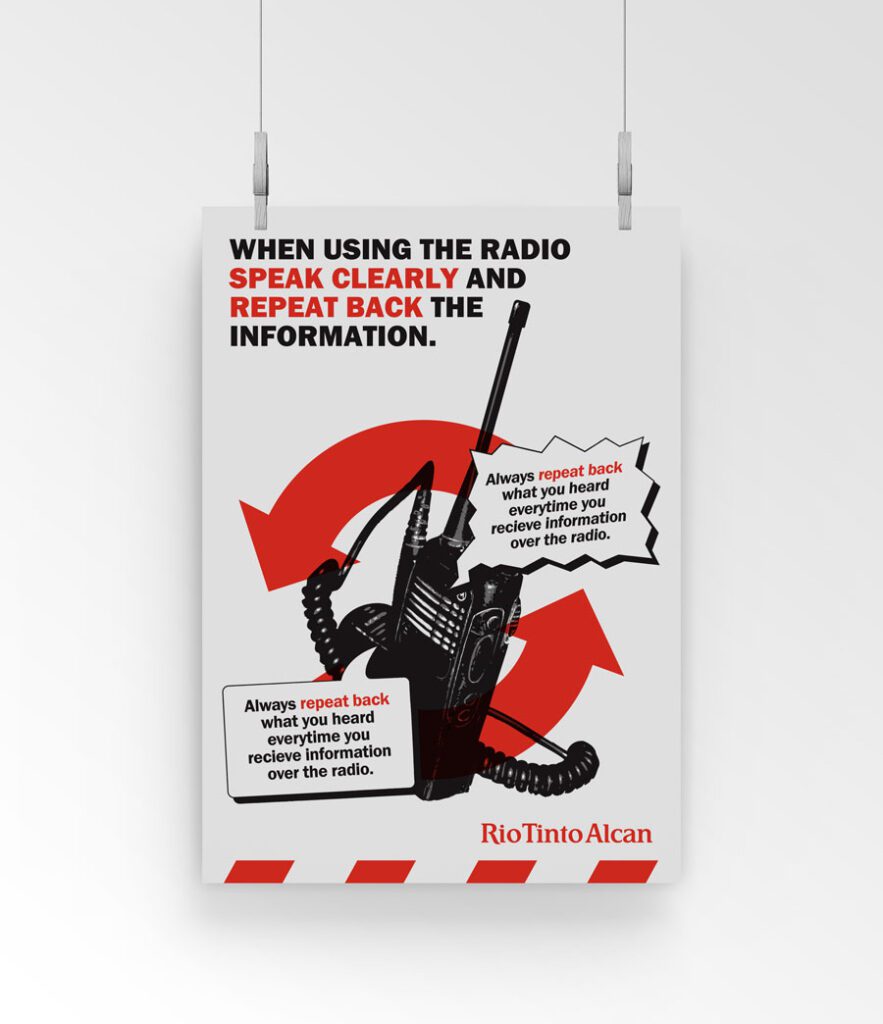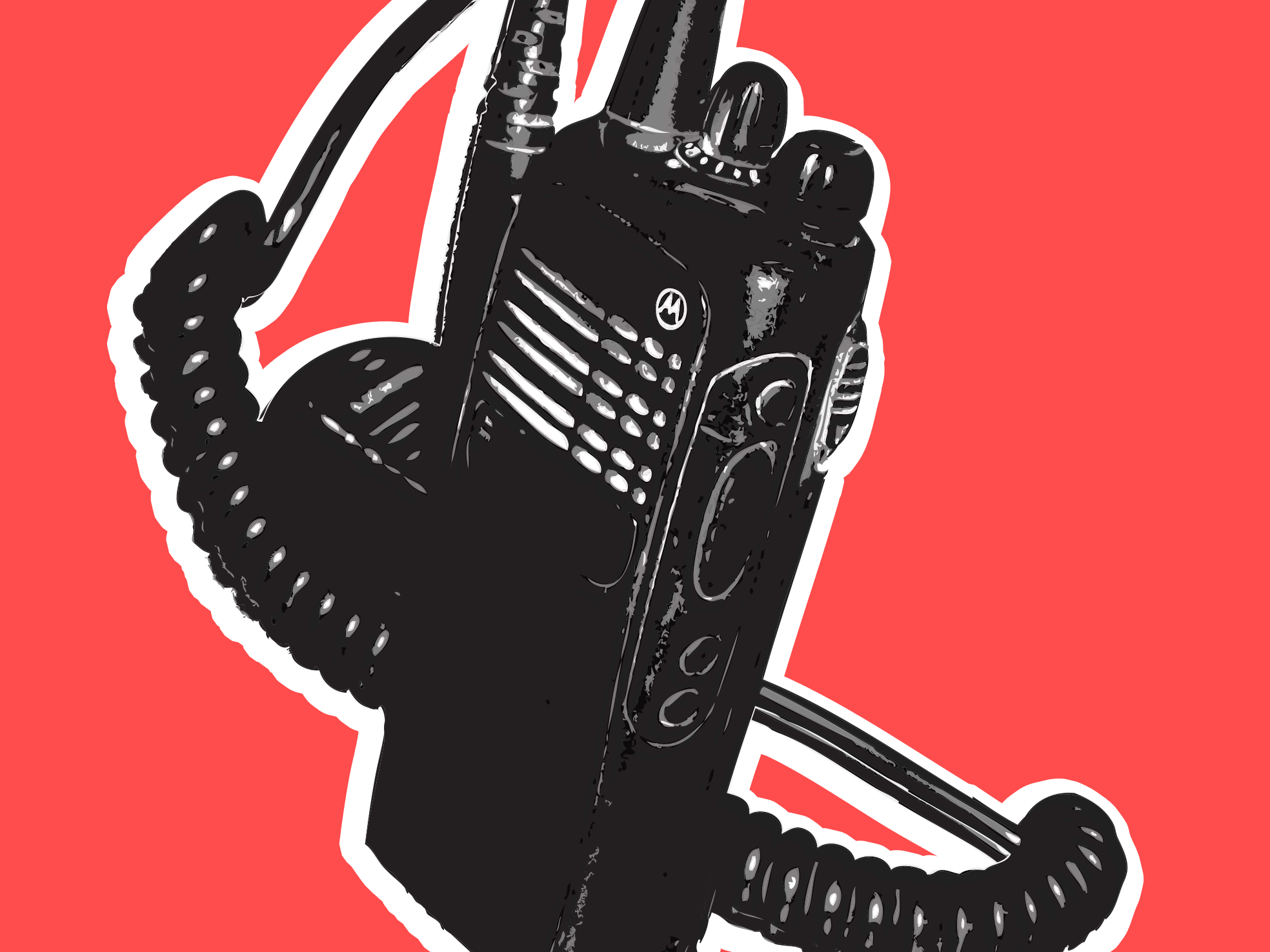Back before I was an Instructional Designer, I had the opportunity to work on a project at a remote mining township, focusing on radio etiquette training. The training department identified frequent communication issues among workers using 2-way radios, and the primary goal was crystal clear: improve clarity and understanding by having staff repeat messages. Success hinged on a significant reduction in incidents where communication breakdowns were the root cause.
What I did then.
The task was straightforward—design a poster as a reminder. However, in hindsight, I never had the chance to assess the effectiveness of those posters. The absence of a thorough evaluation meant we couldn’t gauge the return on investment for the campaign. This experience underscored the critical importance of evaluating the impact of a solution—a lesson that has guided my approach in subsequent projects. Given the chance to revisit it, here’s how I would approach the project with the knowledge I’ve gained.

What would I do next time?
Firstly we would need to create a SMART objective. It would need to be measurable and linked directly to what we want the learner to be doing if the training campaign is a success. Maybe something like this?
RTAG workforce will correctly use radio communication procedures within 6-months, as measured by an 80% reduction in communication-related incidents in safety reports; a 90% increase of correct answers from first micro-course to the second micro-course; 50% increase in positive feedback from supervisors and base station operators.
This objective is rough but it’s a good first draft. It has quantitative and qualitative metrics to give us a well-rounded picture. With some help from the supervisors and subject matter experts we could really nail down a strong objective to aim for.
Phase 1: What does the learner already know? Identify the gaps.
To assess the existing knowledge of the site, I would talk to SMEs and develop a micro-course in the learning management system. This course would include scenario-based questions with authentic feedback explaining the results and consequences of their answers. The insights gained from this micro-course would help identify knowledge gaps and inform the focus of subsequent training steps.

Phase 2: Resources not courses. Providing job aids.
While posters would still be part of the strategy, I would augment them with additional resources such as backgrounds on digital signage and canteen TVs. I’m a firm believer in the mantra “Teach them what they need, when they need it, how they need it“, so I’ll place handy stickers directly on the radios, vehicle dashboards and charging stations. These job aids would serve as reference points throughout the campaign.
Phase 3: Using radio communication to teach radio communication.
Given that the workers commute on buses playing the community’s high school radio station, I would leverage this opportunity to incorporate radio communication lessons into their daily routine. Using data from the micro-course and insights from subject matter experts, I would work with the school students to develop a series of humorous and authentic radio commercials. This initiative would not only enhance the training but also provide high-school students with valuable learning experiences.

To underscore the importance of the campaign, securing the endorsement of upper management is crucial. I would approach the CEO to provide a brief statement, which could be played after the commercials or skits. This endorsement would lend legitimacy and weight to the training.
Optional: Add practical interaction to existing site radio training course.
Considering that radio training is already part of their main induction course, I would propose the inclusion of a practical game-based radio exercise. In this exercise, pairs would explain procedures over the radio, facing time penalties for any deviations from proper radio protocol. The fastest pair would emerge as the winner.
Measuring and evaluating
The success of any campaign lies in its measurable impact. After six months, I would release another micro-course, comparing the results to the initial one. Safety reports would be reviewed to determine if there has been a reduction in communication-based incidents. Additionally, surveys of base station operators and supervisors would be conducted to assess any noticeable drop in radio errors.
Reflecting on this project, it has opened my eyes to the myriad possibilities in designing authentic learning experiences. While my initial approach was a starting point, the ever-evolving field of instructional design encourages us to continually rethink, re-imagine, and redesign for better outcomes. Importantly, it has taught me the undeniable significance of not just doing the work but validating its worth.

